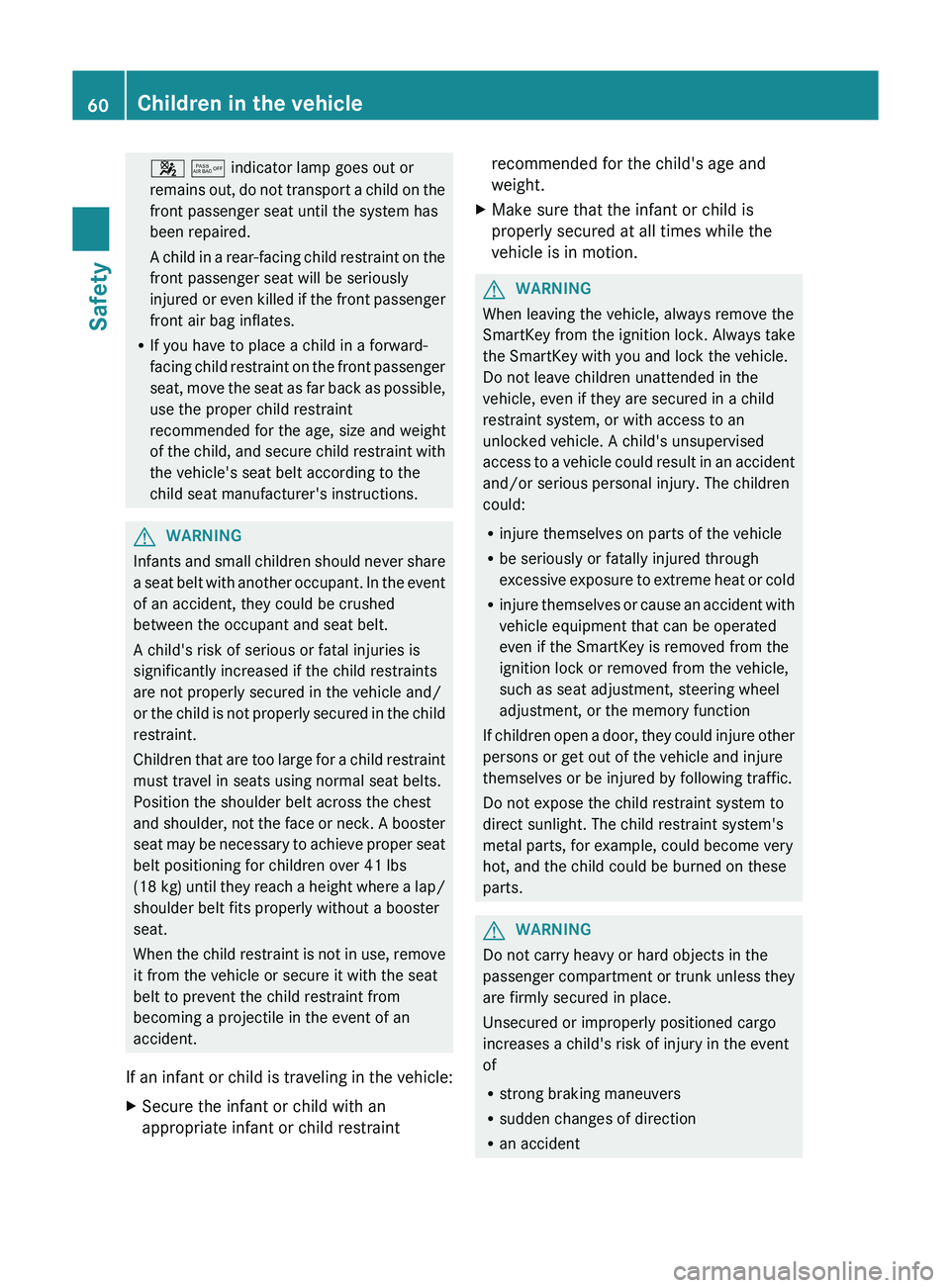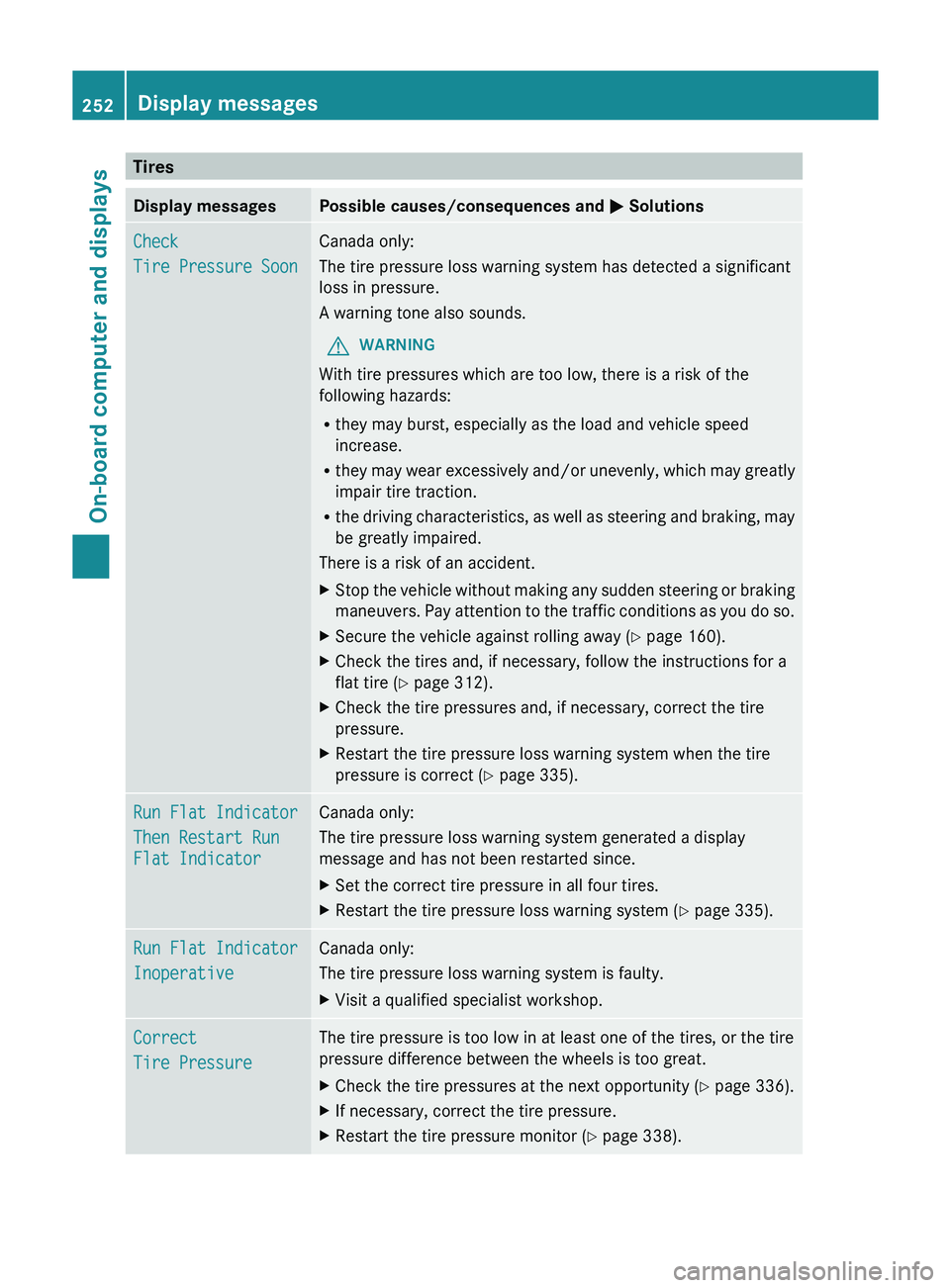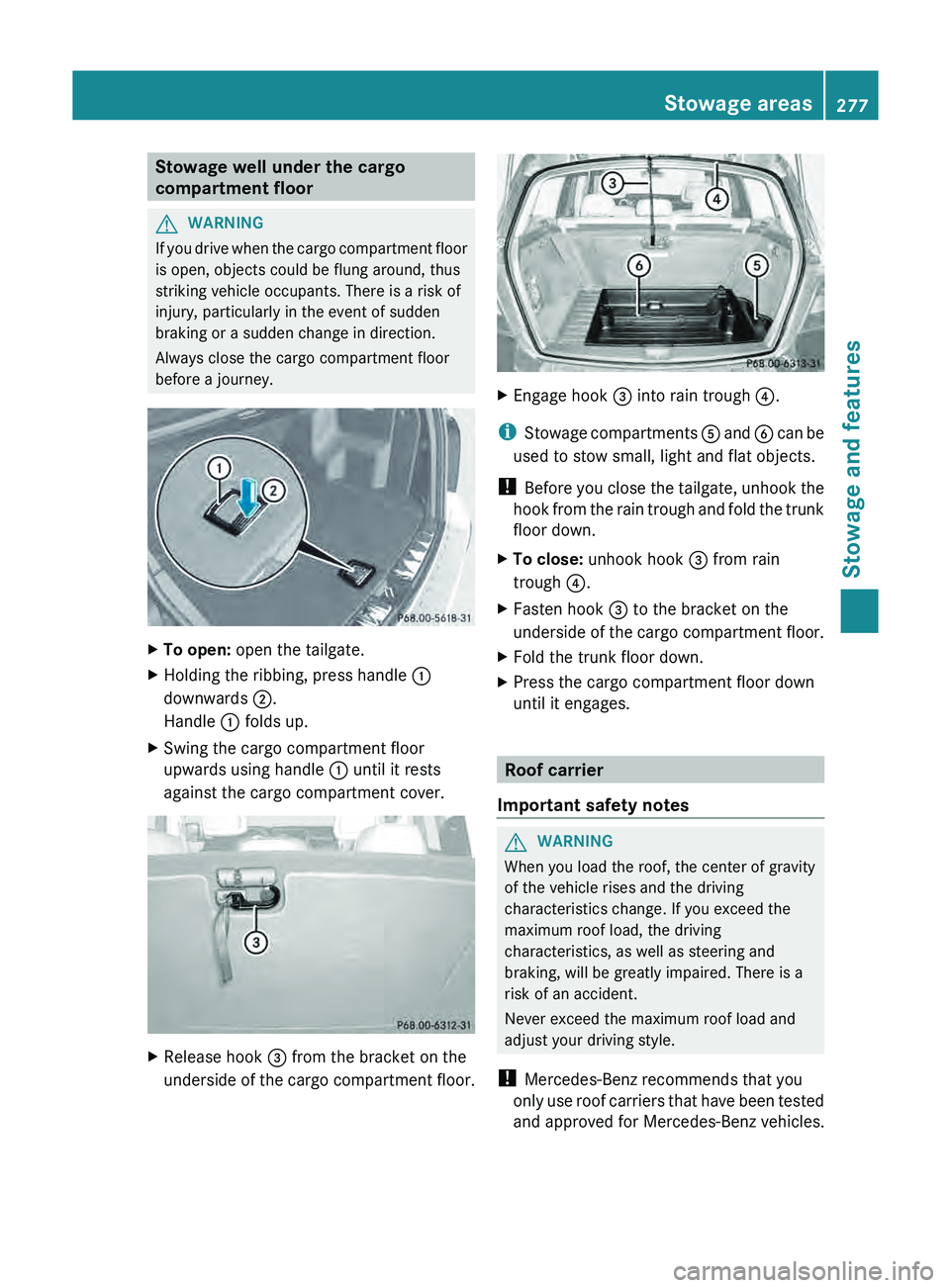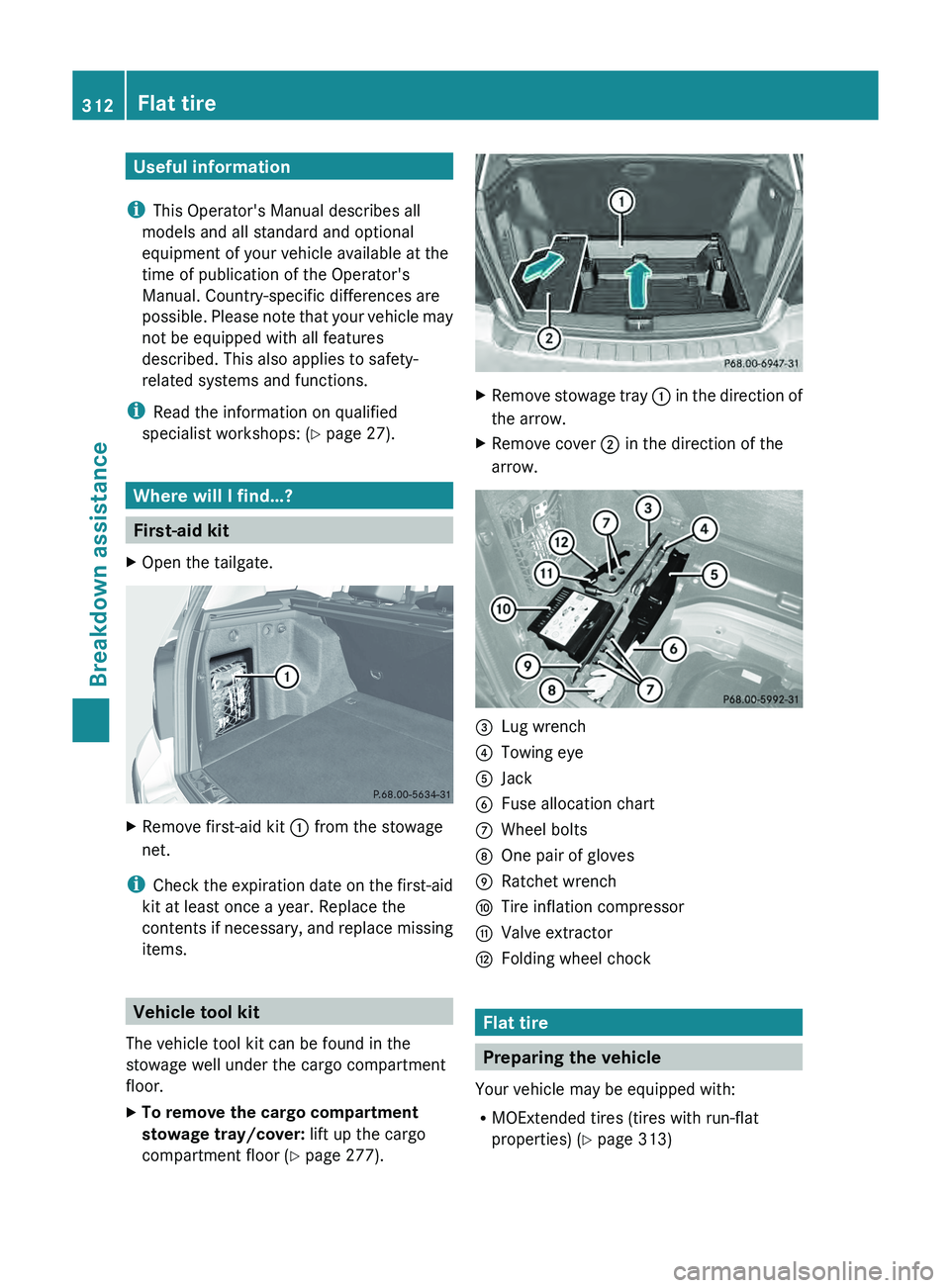2013 MERCEDES-BENZ GLK-CLASS SUV run flat
[x] Cancel search: run flatPage 9 of 380

Defrosting the windows .................
135
Defrosting the windshield .............. 134
Dual-zone automatic climate
control ........................................... 127
Important safety notes .................. 126
Indicator lamp ................................ 132
Maximum cooling .......................... 135
Notes on
using automatic climate
control ................................... 128, 131
Overview of systems ...................... 126
Problems with cooling with air
dehumidification ............................ 132
Problem with the rear window
defroster ........................................ 136
Rear control panel .........................130
Refrigerant ..................................... 372
Refrigerant filling capacity .............373
Setting the air distribution .............133
Setting the airflow ......................... 134
Setting the air vents ......................137
Setting the temperature ................ 133
Switching air-recirculation mode
on/off ............................................ 136
Switching on/off ........................... 131
Switching residual heat on/off ...... 136
Switching the rear window
defroster on/off ............................ 135
Switching the ZONE function on/
off .................................................. 134
Coat hooks ......................................... 276
Cockpit Overview .......................................... 30
see Instrument cluster
Collapsible spare wheel
Inflating ......................................... 360
see Emergency spare wheel
COMAND
see separate operating instructions
Combination switch ..........................112
Compass Calibrating ..................................... 295
Calling up ....................................... 294
Setting ........................................... 294
Consumption statistics (on-board
computer) .......................................... 219
Convenience closing feature ..............88
Convenience opening feature ............87Coolant (engine)
Checking the level ......................... 302
Display message ............................ 243
Filling capacity ............................... 371
Important safety notes
..................371
Temperature gauge ........................ 216
Warning lamp ................................. 265
Cooling
see Climate control
Cornering light function
Changing bulbs .............................. 118
Display message ............................ 239
Function/notes ............................. 114
Crash-responsive emergency
lighting ............................................... 116
Cruise control Cruise control lever .......................170
Deactivating ................................... 171
Display message ............................ 251
Driving system ............................... 169
Function/notes ............................. 169
Important safety notes .................. 169
Setting a speed .............................. 170
Storing and maintaining current
speed ............................................. 170
Cup holder
Center console .............................. 278
Important safety notes .................. 278
Rear compartment ......................... 278
Customer Assistance Center (CAC) ...27
Customer Relations Department .......27 D
Dashboard see Instrument cluster
Dashboard lighting
see Instrument cluster lighting
Data
see Technical data
Daytime running lamps
Display message ............................ 242
Switching on/off (on-board
computer) ...................................... 227
Switching on/off (switch) .............. 111
Dealerships
see Qualified specialist workshop
Declarations of conformity ................. 26 Index
7
Page 12 of 380

Starting the engine with the
SmartKey .......................................
143
Starting with KEYLESS-GO ............. 143
Switching off .................................. 160
Tow-starting (vehicle) ..................... 323
Engine, jump starting
see Jump starting (engine)
Engine electronics
Problem (malfunction) ...................147
Engine oil
Adding ........................................... 301
Additives ........................................ 370
Checking the oil level ..................... 300
Checking the oil level using the
dipstick .......................................... 301
Display message ............................ 245
Filling capacity ............................... 370
Notes about oil grades ................... 369
Notes on oil level/consumption .... 300
Viscosity ........................................ 370
ESP ®
(Electronic Stability
Program) Deactivating/activating ................... 67
Deactivating/activating (AMG
vehicles) .......................................... 68
Display message ............................ 232
ETS/4ETS ........................................ 66
Function/notes ......................... 66, 67
Important safety information ........... 66
Trailer stabilization ........................... 69
Warning lamp ................................. 261
ETS/4ETS (Electronic Traction
System) ................................................ 66
Exhaust check ................................... 162
Exhaust tail pipe (cleaning
instructions) ...................................... 307
Exterior lighting Setting options .............................. 110
see Lights
Exterior mirrors
Adjusting ....................................... 103
Dipping (automatic) .......................105
Folding in/out (automatically) ....... 104
Folding in/out (electrically) ........... 104
Folding in when locking (on-board
computer) ...................................... 230
Out of position (troubleshooting) ...105 Setting ...........................................
104
Storing settings (memory
function) ........................................ 106
Storing the parking position ..........105 F
Filler cap see Fuel filler flap
First-aid kit ......................................... 312
Flat tire MOExtended run-flat system ......... 313
Preparing the vehicle .....................312
see Emergency spare wheel
Floormat ............................................. 295
Fog lamps Switching on/off ........................... 111
Folding the rear bench seat
forwards/back .................................. 272
Fording On flooded roads ........................... 166
Front fog lamps
Display message ............................ 241
Switching on/off ........................... 111
Fuel
Additives ........................................ 367
Consumption statistics ..................219
Displaying the current
consumption .................................. 220
Displaying the range ...................... 220
Driving tips .................................... 162
Fuel gauge ....................................... 31
Grade (gasoline) ............................ 367
Important safety notes .................. 366
Premium-grade unleaded gasoline . 367
Problem (malfunction) ...................157
Quality (diesel) ............................... 368
Refueling ........................................ 154
Tank content/reserve fuel .............366
Fuel filler flap
Opening/closing ............................ 155
Fuel filter (display message) ............246
Fuel level Calling up the range (on-board
computer) ...................................... 22010
Index
Page 15 of 380

M
M+S tires ............................................ 330
Maintenance see ASSYST PLUS
Malfunction message
see Display messages
Matte finish (cleaning
instructions) ...................................... 305
mbrace Call priority .................................... 287
Display message ............................ 234
Downloading destinations
(COMAND) ..................................... 287
Downloading routes .......................290
Emergency call .............................. 284
Geo fencing ................................... 290
Important safety notes .................. 283
Locating a stolen vehicle ............... 289
MB info call button ........................ 286
Remote vehicle locking .................. 288
Roadside Assistance button .......... 286
Search & Send ............................... 288
Self-test ......................................... 284
Speed alert .................................... 290
System .......................................... 284
Triggering the vehicle alarm ........... 291
Vehicle remote malfunction
diagnosis ....................................... 289
Vehicle remote unlocking .............. 288
Mechanical key
Function/notes ................................ 76
Locking vehicle ................................ 81
Unlocking the driver's door ..............81
Memory card (audio) ......................... 222
Memory function ............................... 106
Message memory (on-board
computer) .......................................... 231
Messages see Display messages
Mirrors
see Exterior mirrors
see Rear-view mirror
see Vanity mirror (in the sun visor)
Mobile phone
Menu (on-board computer) ............ 223
Modifying the programming
(SmartKey) ........................................... 75MOExtended run-flat system
...........313
Mounting wheels Lowering the vehicle ......................356
Mounting a new wheel ................... 355
Preparing the vehicle .....................353
Raising the vehicle .........................354
Removing a wheel
.......................... 355
Securing the vehicle against
rolling away ................................... 353
MP3
Operation ....................................... 222
see separate operating instructions
Multifunction display
Function/notes ............................. 218
Permanent display ......................... 227
Multifunction steering wheel
Operating the on-board computer . 217
Overview .......................................... 33 N
Navigation Menu (on-board computer) ............ 221
see separate operating instructions
NECK-PRO head restraints
Operation ......................................... 52
Resetting after being triggered ........ 53
NECK-PRO luxury head restraints
Operation ......................................... 52
Resetting after being triggered ........ 53
Notes on breaking-in a new
vehicle ................................................ 140 O
Occupant Classification System
(OCS) Faults ............................................... 51
Operation ......................................... 47
System self-test ............................... 50
Occupant safety
Children in the vehicle .....................58
System overview .............................. 40
OCS
Faults ............................................... 51
Operation
......................................... 47
System self-test ............................... 50 Index
13
Page 62 of 380

0073 0074 indicator lamp goes out or
remains out, do not
transport
a child on the
front passenger seat until the system has
been repaired.
A child in a rear-facing child restraint on the
front passenger seat will be seriously
injured or even killed if the front passenger
front air bag inflates.
R If you have to place a child in a forward-
facing child restraint on the front passenger
seat, move the seat as far back as possible,
use the proper child restraint
recommended for the age, size and weight
of the child, and secure child restraint with
the vehicle's seat belt according to the
child seat manufacturer's instructions. G
WARNING
Infants and small children should never share
a seat belt with another
occupant. In the event
of an accident, they could be crushed
between the occupant and seat belt.
A child's risk of serious or fatal injuries is
significantly increased if the child restraints
are not properly secured in the vehicle and/
or the child is not properly secured in the child
restraint.
Children that are too large for a child restraint
must travel in seats using normal seat belts.
Position the shoulder belt across the chest
and shoulder, not the face or neck. A booster
seat may be necessary to achieve proper seat
belt positioning for children over 41 lbs
(18 kg) until they reach a height where a lap/
shoulder belt fits properly without a booster
seat.
When the child restraint is not in use, remove
it from the vehicle or secure it with the seat
belt to prevent the child restraint from
becoming a projectile in the event of an
accident.
If an infant or child is traveling in the vehicle:
X Secure the infant or child with an
appropriate infant or child restraint recommended for the child's age and
weight.
X Make sure that the infant or child is
properly secured at all times while the
vehicle is in motion. G
WARNING
When leaving the vehicle, always remove the
SmartKey from the ignition lock. Always take
the SmartKey with you and lock the vehicle.
Do not leave children unattended in the
vehicle, even if they are secured in a child
restraint system, or with access to an
unlocked vehicle. A child's unsupervised
access to a vehicle could
result in an accident
and/or serious personal injury. The children
could:
R injure themselves on parts of the vehicle
R be seriously or fatally injured through
excessive exposure to extreme heat or cold
R injure themselves or cause an accident with
vehicle equipment that can be operated
even if the SmartKey is removed from the
ignition lock or removed from the vehicle,
such as seat adjustment, steering wheel
adjustment, or the memory function
If children open a door, they could injure other
persons or get out of the vehicle and injure
themselves or be injured by following traffic.
Do not expose the child restraint system to
direct sunlight. The child restraint system's
metal parts, for example, could become very
hot, and the child could be burned on these
parts. G
WARNING
Do not carry heavy or hard objects in the
passenger compartment or trunk unless
they
are firmly secured in place.
Unsecured or improperly positioned cargo
increases a child's risk of injury in the event
of
R strong braking maneuvers
R sudden changes of direction
R an accident60
Children in the vehicle
Safety
Page 164 of 380

X
Connecting a trickle charger.
i You can obtain information about trickle
chargers from a qualified specialist
workshop.
If you leave the vehicle
parked for longer than
six weeks, the vehicle may suffer damage as
a result of lack of use.
X Visit a qualified specialist workshop and
seek advice. Driving tips
General driving tips
Important safety notes G
WARNING
If you switch off the ignition while driving,
safety-relevant functions are only available
with limitations, or not at
all. This could affect,
for example, the power steering and the brake
boosting effect. You will require considerably
more effort to steer and brake. There is a risk
of an accident.
Do not switch off the ignition while driving. G
WARNING
If you operate mobile communication
equipment while driving, you will be
distracted from traffic conditions. You could
also lose control
of the
vehicle. There is a risk
of an accident.
Only operate this equipment when the vehicle
is stationary.
Observe the legal requirements for the
country in which you are driving. Some
jurisdictions prohibit the driver from using a
mobile phone while driving a vehicle.
If you make a call while driving, always use
hands-free mode. Only operate the telephone
when the traffic situation permits. If you are
unsure, pull over to a safe location and stop
before operating the telephone.
Bear in mind that at a speed of only 30 mph
(approximately 50 km/h), the vehicle covers a distance of 44 feet (approximately 14 m)
per second.
Drive sensibly – save fuel
Observe the following tips to save fuel:
X
The tires should always be inflated to the
recommended tire pressure.
X Remove unnecessary loads.
X Remove roof racks when they are not
needed.
X Warm up the engine at low engine speeds.
X Avoid frequent acceleration or braking.
X Have all maintenance work carried out as
indicated by the service intervals in the
Maintenance Booklet or by the service
interval display.
Fuel consumption also increases when
driving in cold weather, in stop-start traffic
and in hilly terrain.
Drinking and driving G
WARNING
Drinking and driving and/or taking drugs and
driving are very dangerous combinations.
Even a small amount of alcohol or drugs can
affect your reflexes, perceptions and
judgment.
The possibility of a serious or even fatal
accident are greatly increased when
you drink
or take drugs and drive.
Do not drink or take drugs and drive or allow
anyone to drive who has been drinking or
taking drugs.
Emission control G
WARNING
Combustion engines emit poisonous exhaust
gases such as carbon monoxide. Inhaling
these exhaust gases leads to
poisoning. There
is a risk of fatal injury. Therefore never leave
the engine running in enclosed spaces
without sufficient ventilation. 162
Driving tips
Driving and parking
Page 254 of 380

Tires
Display messages Possible causes/consequences and
0050 SolutionsCheck
Tire Pressure Soon Canada only:
The tire pressure loss warning system has detected a significant
loss in pressure.
A warning tone also sounds.
G WARNING
With tire pressures which are too low, there is a risk of the
following hazards:
R they may burst, especially as the load and vehicle speed
increase.
R they may wear
excessively and/or
unevenly, which may greatly
impair tire traction.
R the driving characteristics, as well as steering and braking, may
be greatly impaired.
There is a risk of an accident.
X Stop the vehicle without making any sudden steering or braking
maneuvers. Pay attention to the
traffic conditions as you do so.
X Secure the vehicle against rolling away ( Y page 160).
X Check the tires and, if necessary, follow the instructions for a
flat tire (Y page 312).
X Check the tire pressures and, if necessary, correct the tire
pressure.
X Restart the tire pressure loss warning system when the tire
pressure is correct (Y page 335). Run Flat Indicator
Then Restart Run
Flat Indicator Canada only:
The tire pressure loss warning system generated a display
message and has not been restarted since.
X
Set the correct tire pressure in all four tires.
X Restart the tire pressure loss warning system ( Y page 335).Run Flat Indicator
Inoperative Canada only:
The tire pressure loss warning system is faulty.
X
Visit a qualified specialist workshop. Correct
Tire Pressure The tire pressure is too low in at least one of the tires, or the tire
pressure difference between the wheels is too great.
X
Check the tire pressures at the next opportunity (Y page 336).
X If necessary, correct the tire pressure.
X Restart the tire pressure monitor (Y page 338).252
Display messages
On-board computer and displays
Page 279 of 380

Stowage well under the cargo
compartment floor
G
WARNING
If you drive when the cargo compartment floor
is open, objects could be flung around, thus
striking vehicle occupants. There is a risk of
injury, particularly in the event of sudden
braking or a sudden change in direction.
Always close the cargo compartment floor
before a journey. X
To open: open the tailgate.
X Holding the ribbing, press handle 0043
downwards 0044.
Handle 0043 folds up.
X Swing the cargo compartment floor
upwards using handle 0043 until it rests
against the cargo compartment cover. X
Release hook 0087 from the bracket on the
underside of the cargo compartment
floor. X
Engage hook 0087 into rain trough 0085.
i Stowage compartments 0083 and 0084
can be
used to stow small, light and flat objects.
! Before you close the tailgate, unhook the
hook from the rain trough and fold the trunk
floor down.
X To close: unhook hook 0087 from rain
trough 0085.
X Fasten hook 0087 to the bracket on the
underside of the cargo compartment
floor.
X Fold the trunk floor down.
X Press the cargo compartment floor down
until it engages. Roof carrier
Important safety notes G
WARNING
When you load the roof, the center of gravity
of the vehicle rises and the driving
characteristics change. If you exceed the
maximum roof load, the driving
characteristics, as well as steering and
braking, will be greatly impaired. There is a
risk of an accident.
Never exceed the maximum roof load and
adjust your driving style.
! Mercedes-Benz recommends that you
only use roof
carriers that
have been tested
and approved for Mercedes-Benz vehicles. Stowage areas
277
Stowage and features Z
Page 314 of 380

Useful information
i This Operator's Manual describes all
models and all standard and optional
equipment of your vehicle available at the
time of publication of the Operator's
Manual. Country-specific differences are
possible. Please note that your
vehicle may
not be equipped with all features
described. This also applies to safety-
related systems and functions.
i Read the information on qualified
specialist workshops: ( Y page 27).Where will I find...?
First-aid kit
X Open the tailgate. X
Remove first-aid kit 0043 from the stowage
net.
i Check the
expiration date
on
the first-aid
kit at least once a year. Replace the
contents if necessary, and replace missing
items. Vehicle tool kit
The vehicle tool kit can be found in the
stowage well under the cargo compartment
floor.
X To remove the cargo compartment
stowage tray/cover: lift up the cargo
compartment floor (Y page 277). X
Remove stowage tray 0043 in the direction of
the arrow.
X Remove cover
0044 in the direction of the
arrow. 0087
Lug wrench
0085 Towing eye
0083 Jack
0084 Fuse allocation chart
006B Wheel bolts
006C One pair of gloves
006D Ratchet wrench
006E Tire inflation compressor
006F Valve extractor
0070 Folding wheel chock Flat tire
Preparing the vehicle
Your vehicle may be equipped with:
R MOExtended tires (tires with run-flat
properties) ( Y page 313)312
Flat tire
Breakdown assistance